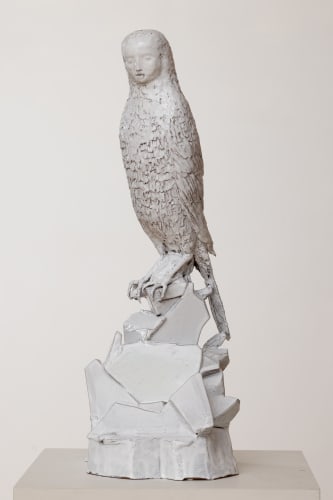Stand W11, next to the VIP Room.
We will be presenting the work of six artists;
Alice Kettle, Textile, Cecilia Charlton, Textile, Anthony Stevens, Textile, Suzanne Knight, Textile, Claire Curneen, Ceramic, Oriel Zinaburg, Ceramic
All six artists have made new work for the fair and have written about their personal connection to the oceans, the theme that connects the work in this presentation. Cecilia Charlton has been a free diver in her past, and was keen to explore how the movement of water and light effects of the sub acqua experience could be translated in embroidery and weavings, depicting how the solid and liquid elements found in the ocean constantly influence eachother. Alice Kettle has for many years made work associated with the oceans, of most relevance, a residency in Madeira working with women in the community whose lives revolve around the ocean, from whence the Sea Figure works shown here originate. For Anthony Stevens the ocean has long been one of the metaphors that he uses in his work to refer to the continuum and circularity of life, ‘what goes out must come in’, he has made a series of Naval flags to symbolise being lost and found. For Suzanne Knight, with her focus on climate change, it is the plastics that pollute that we show. Clare Curneen has made a Siren, the mythical sea creature who lures sailors as they pass. Oriel Zinaburg’s work expresses the organic forms, both solid and fluid, found in the oceans. Inspired by landscape and geology Zinaburg explores the beauty in imperfection and irregularity and has made a new series of works for the fair entitled the Coral Collection.
Alice Kettle;
“It is from the oceans that we are sustained.
We are carried in the rhythm and rise of the ocean currents.
From the seas and oceans, we find oxygen to breathe.
It is from the ocean that the weather meets the land.
It is from the ocean that we were born and are borne.
This collection of works are swimmers and bathers in the sea.
I swim everyday. In another life maybe I was born to be in the sea or deep in the vast oceans.
We are increasingly aware of the criticality of climate change and the regulating force of the oceans. The expanse of the oceans is powerfully universal and reminds us what life is about.” Alice Kettle.
Cecilia Charlton;
In the diptych ‘Sand and Sea’, Charlton uses the process of embroidery to explore the parallel existences of sand and ocean. Constantly under the influence of each other, perhaps it is no surprise that as a material they echo each other in the forms that they create. This can be seen in deserts -- over time, sand dunes progress across the landscape as waves traverse the ocean. While one is solid and the other a liquid, they exhibit similar properties when in motion. Embroidery lends itself well to these themes, to conjure the infinite and infinitesimal feeling of grains of sand on a beach and the waves that lap the shore in perpetuity. Moments of silver and gold gilding accent the work, evoking the warmth of sand under the sun, and the shimmering of the moon’s reflections upon the waves.
For these pieces Stevens used the image of an ocean voyage as metaphor for life's journey. Visually, the pieces were inspired by the Ghanaian tradition of Asafo flags, international Naval signaling flags, the comfort and texture of quilts as well as the visual association between naval flags and quilting; all of which have at their heart the basic tools of needle, thread and cloth.
Each piece was constructed with, and titled after, a traditional naval signaling flag which is situated in each flags corner. He chose to go with the international meaning of each flag as it held connotations of a shared human meaning which could be translated into a metaphorical story about the fundamental human experience, the advice and wisdom that we need to communicate, share and signal to each other as we inevitably get lost and get found as we all make our way through life.
Suzanne Knight;
“Plastic exists in all languages and in the homes of all nations. During the past few years we’ve purchased plastic bottles containing disinfectants, chemicals and antiseptics, used to scrub away a virus, washing these liquids down our sinks, sending empty bottles onto our beaches, into our oceans.” In this work the artist has translated words such as disinfectant and sterilise into different languages, cut up and jumbled the letters to create a universal language of consumerism and waste, then woven these ‘words’ into common plastic shapes. There are no borders for the spread of a virus or the spread of waste.
Claire Curneen;
Wednesday 1 March
Media Preview 13.00 - 14.00 (invitation only)
Exclusive Preview 14.00 – 18.00 (invitation only)
Collectors’ Preview 18.00 - 21.00 (invitation only)
Live on Artsy.net exclusively for media and VIPs
Thursday 2 March
Private View Day 11.00 – 18.00 (by invitation and tickets available to purchase)
Private View Evening 18.00 – 21.00 (by invitation and tickets available to purchase)
Friday 3 - Sunday 5 March
Open 11.00-18.00






